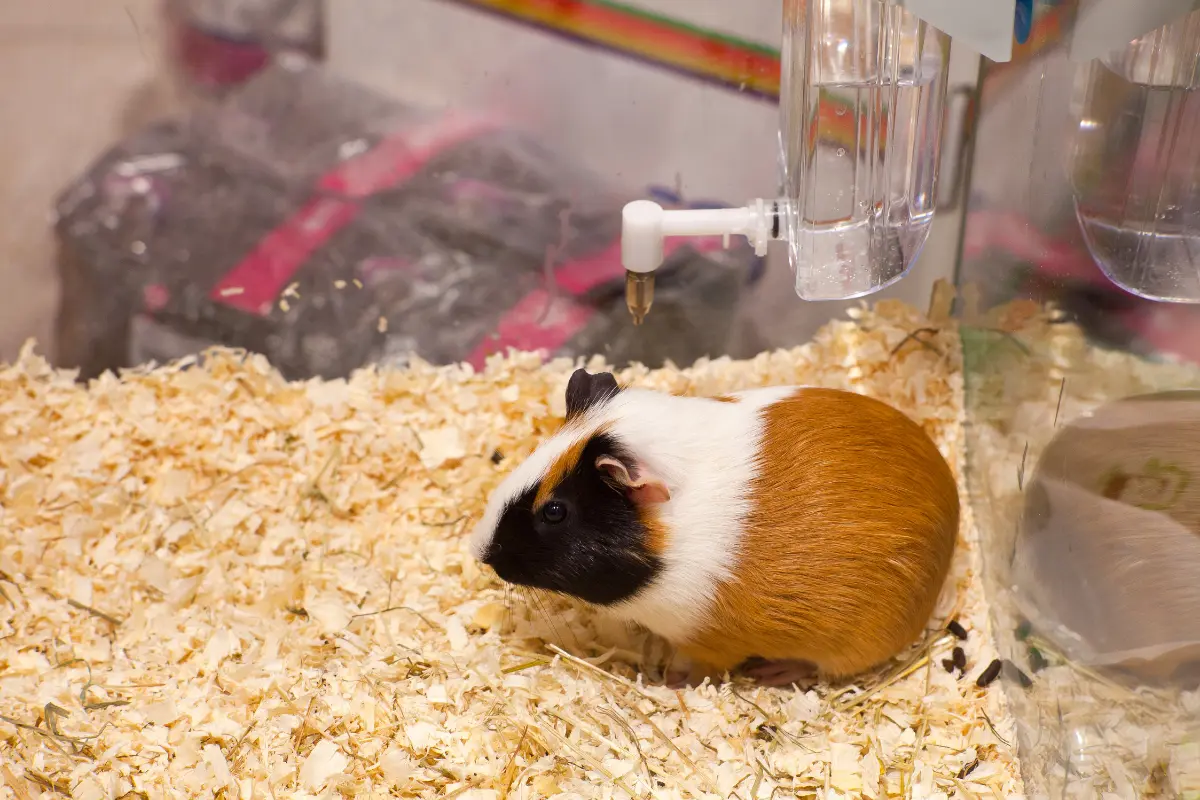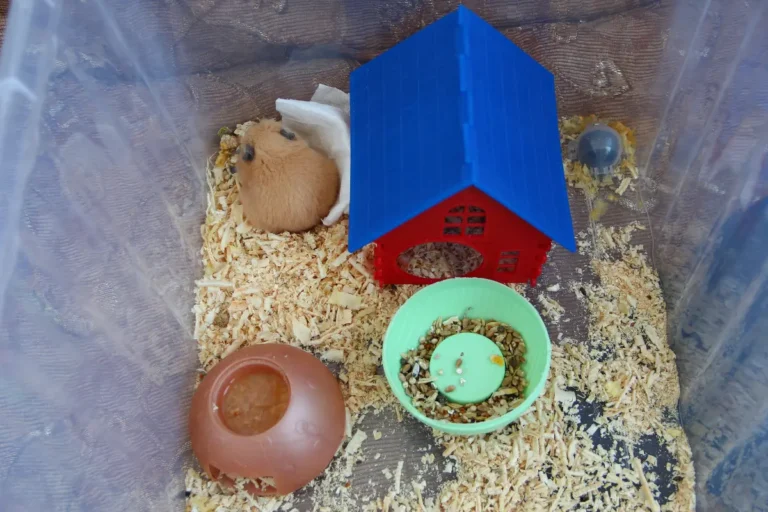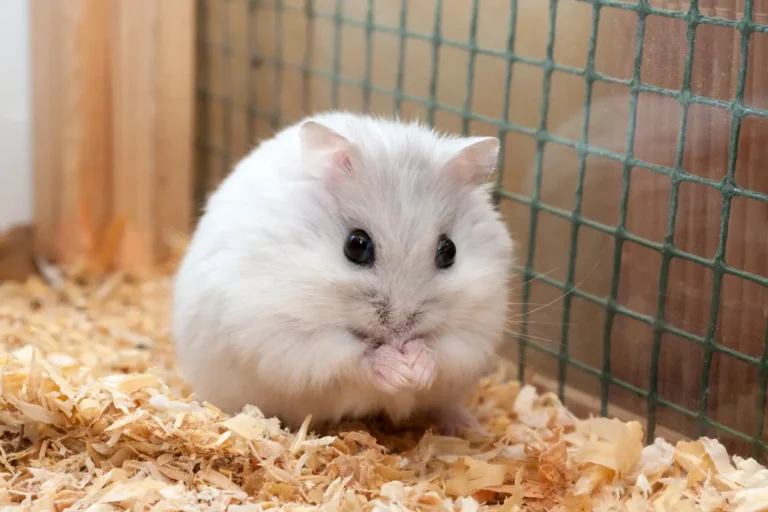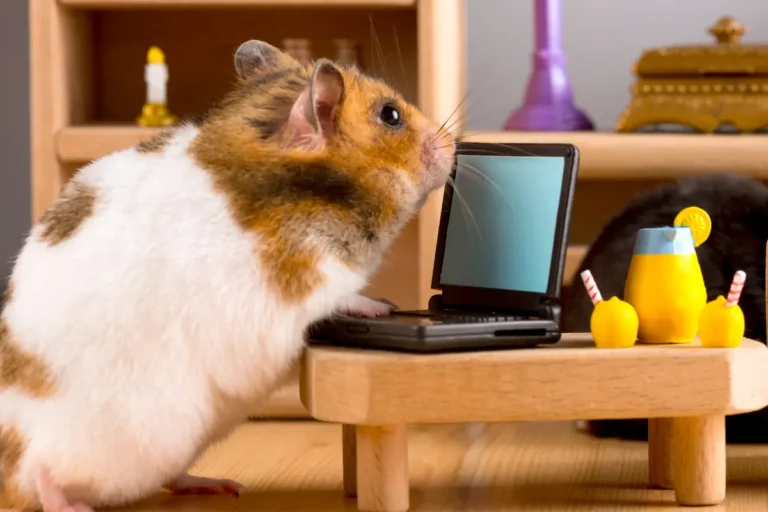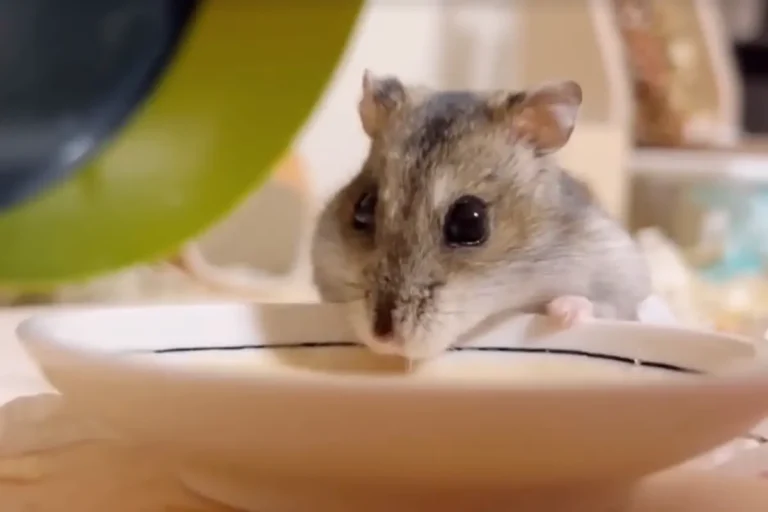Is Your Hamster Not Burrowing? Top Reasons and How to Fix It
Hamsters are natural burrowers. In the wild, they would create elaborate tunnels where they sleep, store food, and even raise their young. However, many hamster owners find that their pets rarely, if ever, engage in this behavior within their cages.
Next, we’ll explore why this happens and what you can do to help encourage your hamster to burrow.
Digging vs. Burrowing: What’s the Difference?
It’s important to distinguish between digging and burrowing. While both involve moving bedding, burrowing refers to creating tunnels and deeper spaces beneath the bedding.
Many hamster owners think their pets are burrowing when, in reality, they are just digging and covering themselves with bedding. With only an inch of bedding, hamsters can’t create proper burrows; they’re just moving around the shallow layer.
True burrowing, on the other hand, involves digging deeper tunnels under the bedding. Without enough bedding, your hamster won’t be able to create these intricate, underground pathways.
Why Hamsters Need Deep Bedding
One of the few studies conducted on hamster burrowing behavior focused on Syrian hamsters. In the study, researchers provided three groups of hamsters with different bedding depths:
- Group 1: 80 cm (about 31 inches) of wood shavings
- Group 2: 40 cm (about 15 inches) of wood shavings
- Group 3: 10 cm (about 4 inches) of wood shavings
They monitored the hamsters’ behavior and health by recording them on video, measuring hormone levels, and checking physical health markers. The findings were significant:
- Hamsters on just 10 cm of bedding showed more stress behaviors, such as chewing on bars, and had higher running activity—signs often linked to frustration or boredom.
- The hamsters in the 40 cm and 80 cm setups constructed actual burrows and made use of them.
- In the 80 cm group, there was no bar-chewing at all, suggesting they felt more satisfied and stimulated in their environment.
This study suggests that a depth of at least 40 cm (about 16 inches) helps hamsters express natural behaviors and feel more at ease.
While achieving 40 cm of bedding might be a challenge for many owners, it’s a strong reminder that more bedding generally leads to happier, healthier hamsters.

Factors That Affect Burrowing in Hamsters
If you’re wondering why your hamster might not be burrowing, there are several potential reasons to consider.
1. Depth of Bedding
One of the most crucial factors is the depth of the bedding. Hamsters need deep bedding to create a burrow. In the wild, they live in deep tunnels that allow them to move freely and make multiple chambers. If your hamster only has a small amount of bedding, such as an inch or two, they won’t be able to dig a true burrow.
Ideally, hamster bedding should be at least 8 inches deep, though 10 inches or more is highly recommended to give your hamster the best chance to burrow. The deeper the bedding, the more comfortable and natural the environment will be for your hamster to dig and explore.
2. Type of Bedding
Not all bedding materials are created equal when it comes to burrowing. The type of bedding you use can play a significant role in whether your hamster burrows effectively. Some bedding materials hold tunnels better than others.
- Paper-based bedding is known to be one of the best options for burrowing, as it’s soft and can hold the shape of tunnels more effectively.
- Aspen bedding is another option, though it doesn’t hold tunnels as well as paper-based bedding.
- Hemp bedding is safe for hamsters but can be less stable for burrowing compared to paper bedding.
If you’re not able to switch bedding types, you can also improve the stability of your current bedding by layering it with other materials, like soft hay (such as orchard grass), which can help create more stable burrows.
3. Fluffed-Up Bedding
While it might seem like more bedding equals more burrowing potential, fluffed-up bedding doesn’t provide the stability your hamster needs to dig tunnels. When bedding is fluffed up, it becomes too light and airy, causing the tunnels to collapse easily.
To ensure your hamster can burrow successfully, compact the bedding as you add it. Press it down gently to create a denser structure. This compacted bedding will allow your hamster to build stable tunnels that can hold their shape and provide a safe space for your hamster.
4. Size of the Burrowing Area
Another common issue is the size of the burrowing area. If you’ve only provided your hamster with a small patch of deep bedding, they might feel restricted and unwilling to dig. In the wild, hamsters have access to large areas of ground to burrow, and restricting them to a small space can be confusing.
To solve this, ensure that your hamster’s enclosure has deep bedding throughout. While it’s okay to leave some areas more shallow, like where the wheel is located, the rest of the enclosure should be deep enough to accommodate burrowing.
5. Temperature and Humidity
Though less commonly discussed, temperature and humidity can affect burrowing behavior. Hamsters generally prefer cooler, dry environments, and extreme heat or humidity might cause them to avoid burrowing. If your hamster’s enclosure is too warm or humid, it could be making them uncomfortable, leading to a lack of interest in digging.
Make sure your hamster’s enclosure is in a cool, dry spot, away from direct sunlight or heat sources. A stable, comfortable environment will encourage natural behaviors, including burrowing.
6. Hamster’s Personality and Species
Lastly, it’s important to consider that some hamsters are simply less inclined to burrow than others. Hamster personality can vary greatly. Some hamsters, particularly certain dwarf species, may not burrow as much because they naturally tend to nest in pre-existing burrows or caves in the wild.
Additionally, Syrian hamsters, which are larger, are more likely to engage in burrowing behavior compared to some smaller species. So, even if you provide the perfect conditions, it’s possible that your hamster simply isn’t as motivated to burrow as others.
Why Burrow Starters Are Important for Hamsters
Some hamsters, especially dwarf species, may need a bit of help getting started with burrowing.
Hamster burrow starters, such as cork logs, cardboard tubes, or pre-built burrow boxes, provide an ideal solution. These items create a ready-made tunnel or hideout, encouraging your hamster to dig and expand its space.
For dwarf species in particular, burrow starters can be especially useful, as some species naturally inhabit pre-built burrows in the wild. Offering a small tunnel or hideout can provide them with a sense of security, prompting them to begin burrowing on their own.
Does Using a Lot of Bedding Cost So Much?
One concern that many hamster owners have when providing deep bedding is the cost. Yes, you’ll indeed need to invest in more bedding upfront, but you don’t need to replace it every week.
In fact, doing so is wasteful and stressful for your hamster. It’s much better to spot-clean the cage and replace only the soiled bedding. This allows you to maintain the proper bedding depth while saving money in the long run.
The key is to create a stable, deep bedding environment that encourages burrowing and keeps your hamster comfortable. With proper care and maintenance, the costs of bedding can be manageable.
Conclusion
If your hamster isn’t burrowing, don’t panic. With a little patience and the right setup, your hamster will likely start burrowing naturally. Make sure they have at least 8 inches of bedding (preferably more), use bedding that holds tunnels well, and ensure the bedding is compacted for stability.
You can also try adding burrow starters to help them get going. Ultimately, some hamsters may take longer to burrow, so it’s important to be patient and let your hamster decide when they’re ready to dig.
